How many times do you find your students reading a text just to skim it and find the answers to the comprehension questions? Or maybe you see them sneaking their phone out to Google Translate sentences in the text? If you’re ready to get your students diving deep into interpretive tasks, then close reading is going to be your best friend. These strategies for close reading will help your students understand the main idea, provoke thoughtful conversations, and annotate texts like never before.
What is “close reading”?
Close reading is a thoughtful analysis of a text, focusing on the details and patterns to develop a deeper understanding of the text’s meaning. When doing a close read, it requires reading with a pencil, re-reading, and discussions to discern meaning.
What kinds of texts can you close read?
In a world language setting, almost any text will work! Poems, short stories, song lyrics, novels, news articles, and more! The most important thing to keep in mind when finding a text for your students is to make sure that it is comprehensible for them. That means that the text is just a bit above their current proficiency level. It shouldn’t be too easy or too far out of reach for them to interpret.
The ideal close reading text will include rich vocabulary. It should provoke ideas that lead to questions and discussions that can happen over the course of a few lessons.
Here are some of my favorite interpretive readings that I have done with my students. They include animals from South and Central America, tourism documents, biographies, short stories, and more! If you’re looking for more guidance on interpretive tasks, then check out this blog post.
Steps for close reading
Be prepared to read the text more than once. Doing a close read is just that… “closely” reading. Which we all know requires multiple steps. Imagine that during each read through, you are using a stronger and stronger magnifying glass. Your first read will be “zoomed out” far enough that you’re just looking for the big picture, but by the final read, you are analyzing small details, theme, point of view, etc.
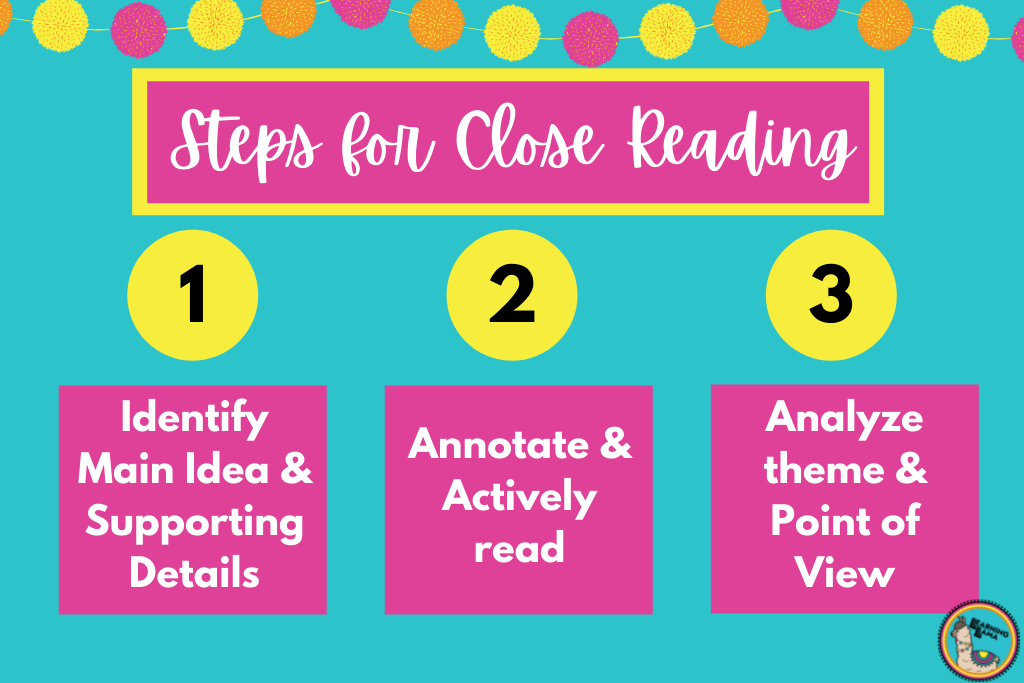
The first read: Focus on the main idea and supporting details.
Your students’ goal should be to identify the main idea. You will need to check for understanding. They can pair-share to discuss what they found the main idea to be. As they share their ideas, make sure you are listening to determine if their understanding of the text is accurate.
The second read: Annotate and actively read.
This time, your students should be reading with a pencil in hand (or highlighters… see below!). As students read, you need to guide them and explain to them what they should be looking for. Maybe you want them identifying new vocabulary, areas of confusion, parts that make them smile, etc. (Again, see below for an annotation freebie bookmark.) They should be annotating directly on the text, taking notes, and diving deep into the details of the text.
The third read: Analyze theme/point of view
After students have really annotated the text, now they are ready to put it all together into analysis. They should have written down questions, comments, and thoughts. Now, you want them to identify the author’s purpose or theme. They can discuss the point of view of the author and how that shapes the text.
Annotation during a close read
Encourage students to use the margins of the text. When you are preparing for a close reading, you want to make sure that the text is formatted in such a way that there is ample space in the margins for note taking.
My favorite way to do a close reading with my students is with annotation markings. In my class, I use the same annotation markings anytime we do a close read. The more you use these symbols, your students will become accustomed to using them.
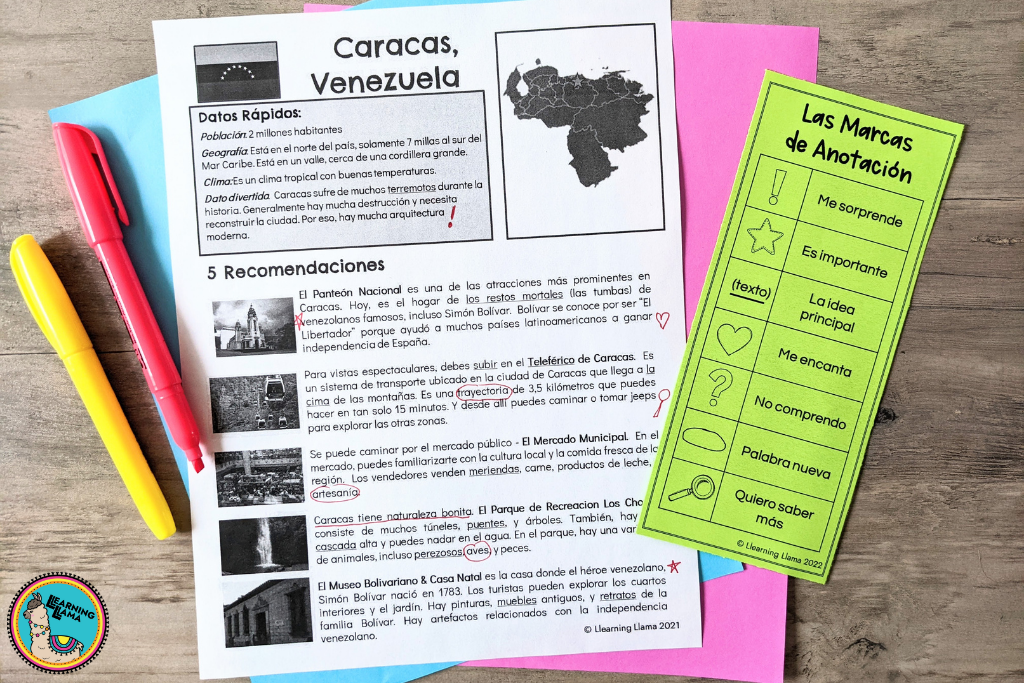
Grab your FREE set of annotation bookmarks and larger print sheets. With the bookmark format, you can print one for each student and give it out at the beginning of the year. Another suggestion is to laminate and tape one to each desk in your classroom, especially if you plan on using close reading strategies a lot.
Using highlighters during a close reading activity
With my school supply budget, I purchased a bunch of sets of highlighters for my students. Each set came with 4 colored highlighters (blue, pink, yellow, and green). I always had my students sit in small groups of 3-5 students, so when the time would come for highlighter activities, I would pass out a set of highlighters to each group. When using highlighters for a close reading, create a guide to keep all students on the same page.
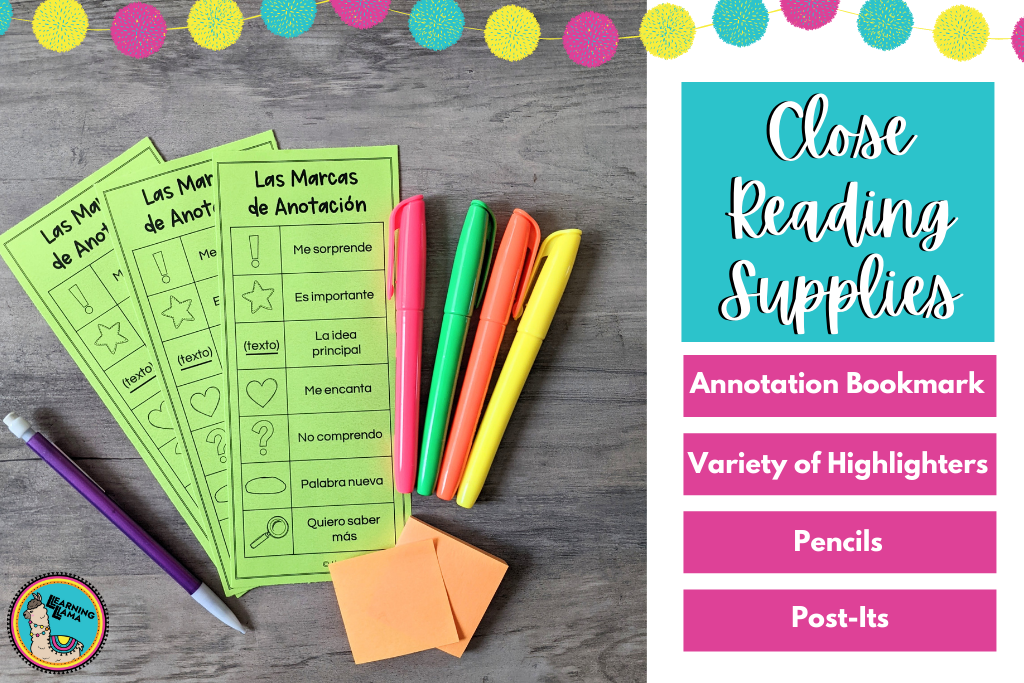
Let’s say you’re annotating a short story during a unit on the differences between the preterit and imperfect. You would give instructions asking students to search for different textual or grammatical elements within the text. When they encounter those elements, they are to highlight them based on your color-coded instructions. For example, highlight all of the uses of the preterit in pink and all of the uses of imperfect in green.
Students can also highlight the main idea in one color, supporting details in another color, and new vocabulary terms in a third color. The possibilities are endless, and it really depends on the difficulty of the text and the purpose for which you are reading. Every time you do a close read, your highlighter guidelines can change.
Questions for Close Reading
The final aspect of close reading gets your students thinking outside of the box. The purpose of close reading is obviously to really and truly analyze a text. Once students have annotated, read, and re-read, and discussed their findings, they are ready to pose questions. When thinking of Bloom’s Taxonomy, this step is high up on the list of categories.
Being able to pose discussion questions will be easier for students once they do a close read because now they are thinking about the text in a new way, rather than simply reading for comprehension questions. Students could pose questions about the characters and their personality traits, decisions, actions, speech, etc. Questions can also ask students to relate the story or characters to their own life and experiences. Grant Wiggins, Ed.D has some great examples of questions to ask during a close read here.

If your students formed really great questions and you want to take advantage of their amazing work, then add a Socratic Seminar to the end of your close reading unit. In a Socratic Seminar, small groups of students lead the discussion with their own questions and answers while the remainder of the class listens and provides feedback on their discussion. Here are some Socratic Seminar resources.
Are you ready to try out these strategies for close reading with your students? It will be a learning process for you and them. Over time, they will come to appreciate the steps for close reading when they see that they are really understanding a text in their L2. Teaching reading is one of my favorite parts of being a Spanish teacher. I hope you find these strategies for close reading helpful and practical!
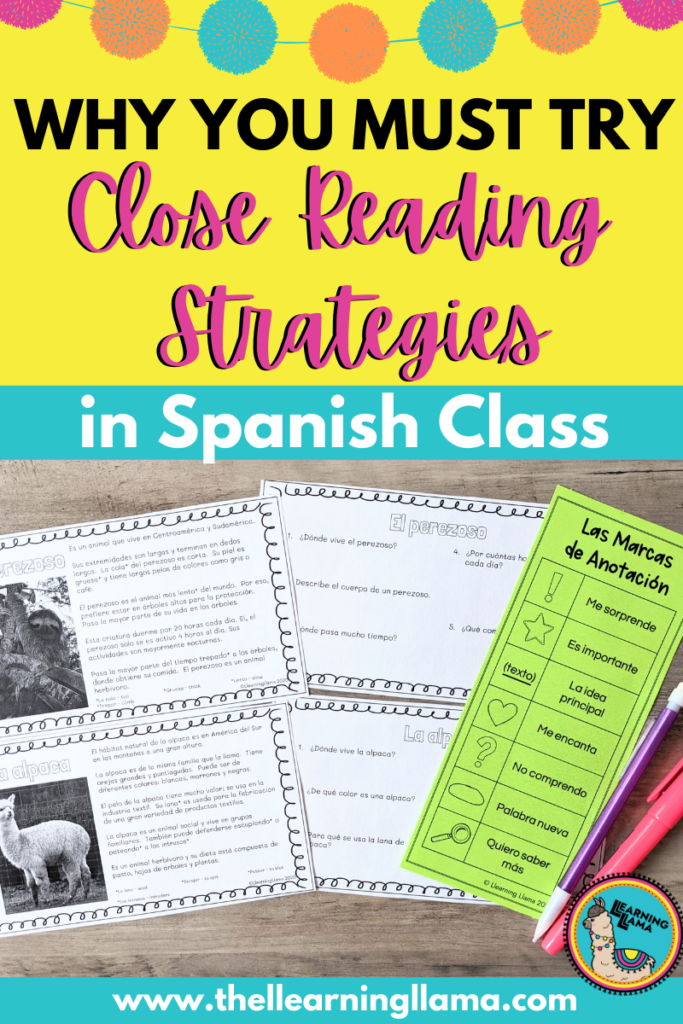

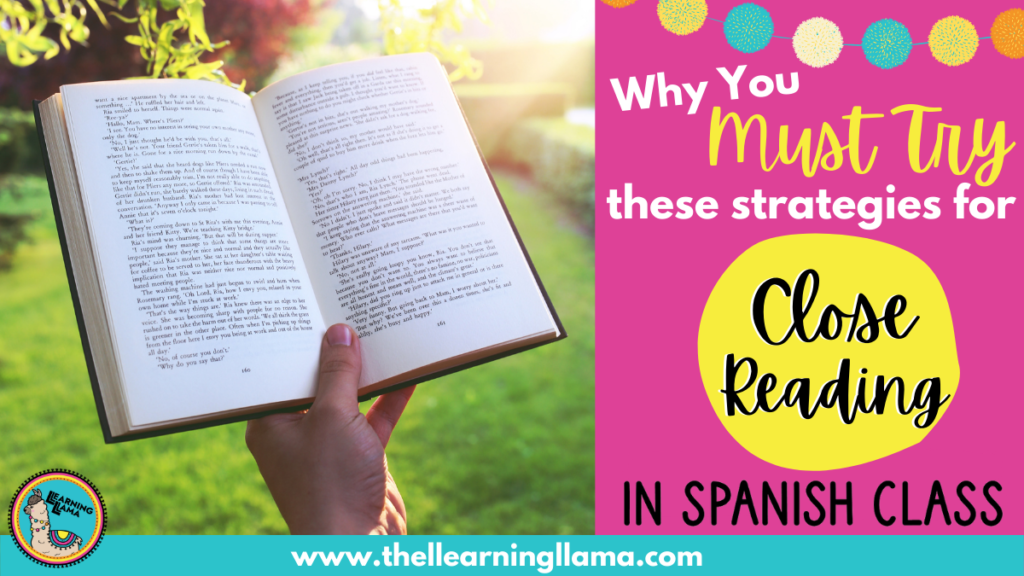

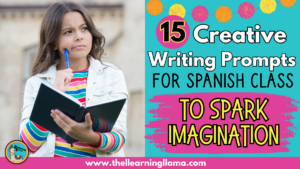
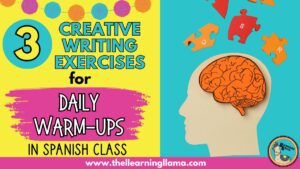

One Response